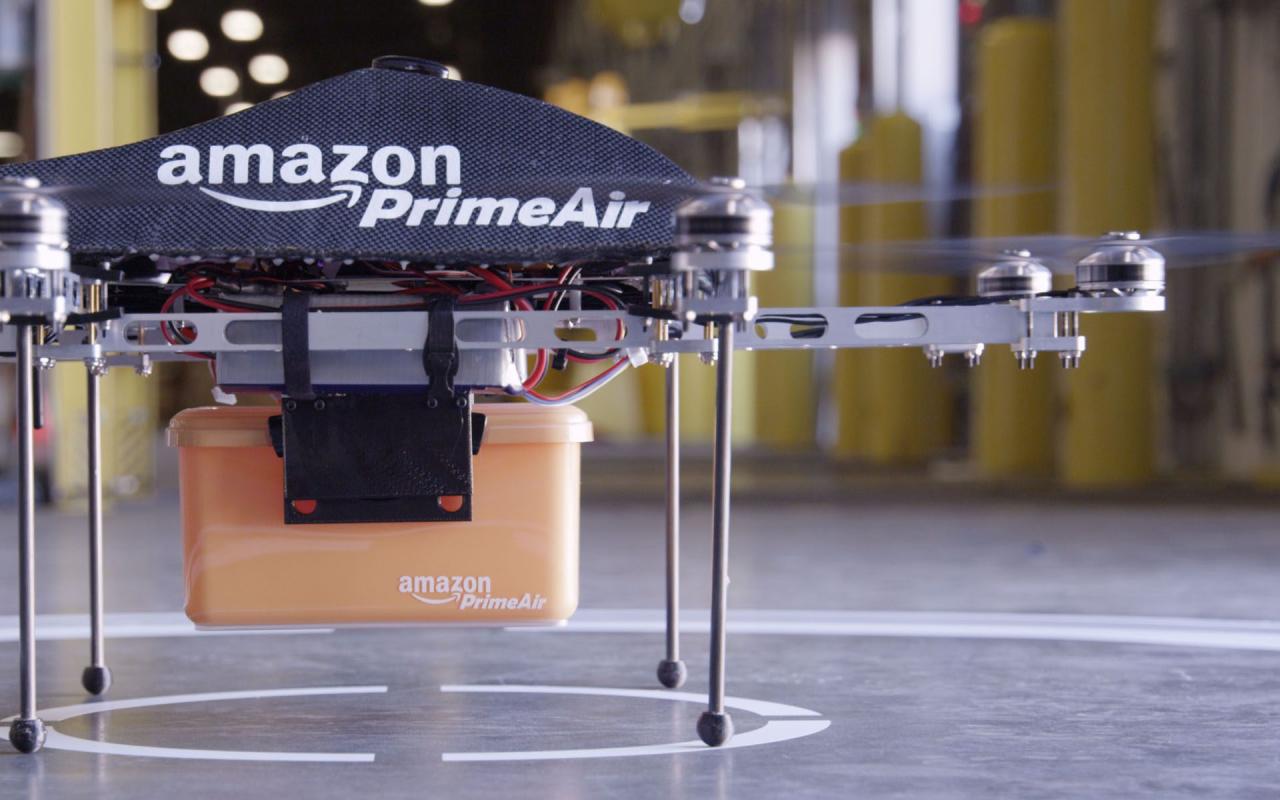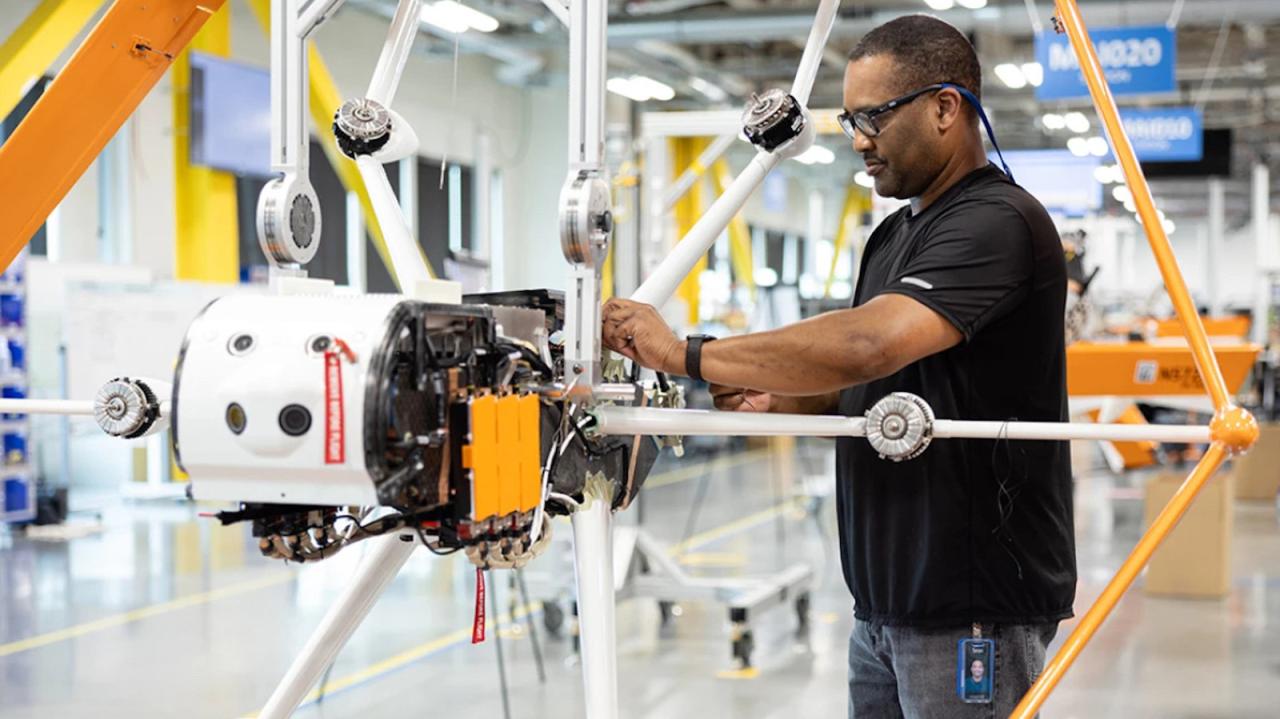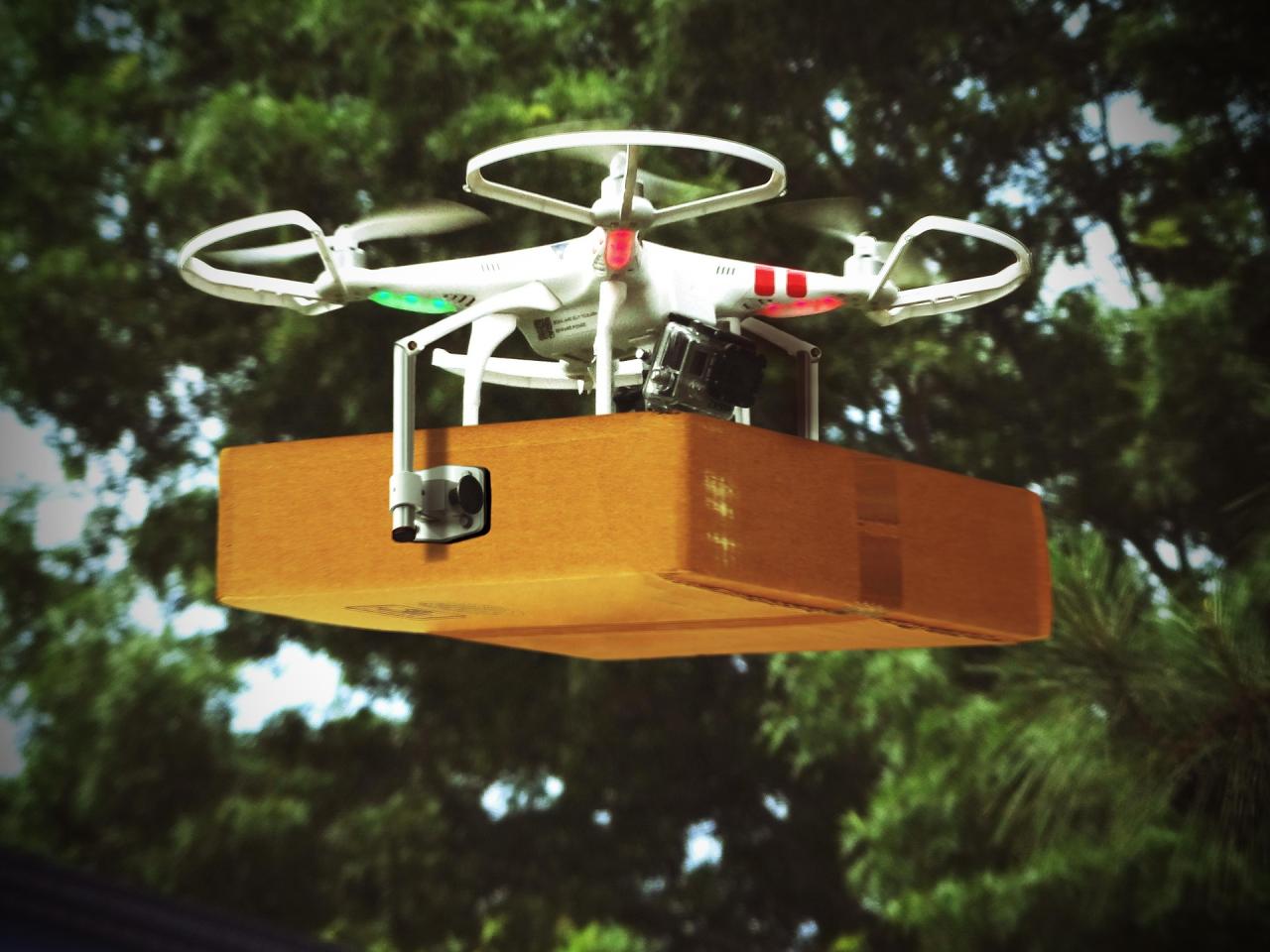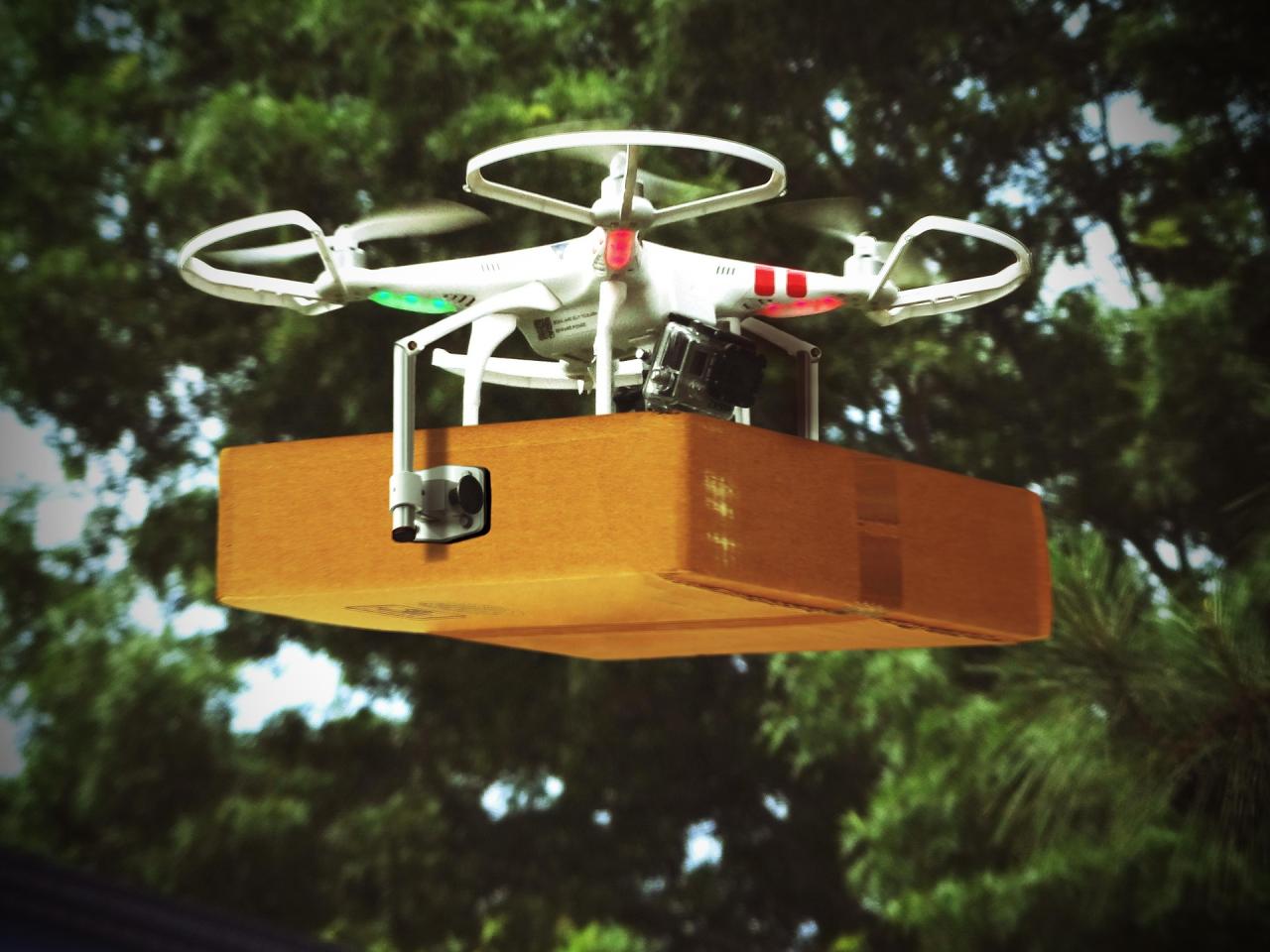Amazon drone delivery locations are rapidly expanding, revolutionizing how we receive packages. This expansion isn’t just about speed; it’s about reaching remote areas, optimizing logistics, and potentially reshaping local economies. We’ll explore the current state of Amazon’s drone delivery program, the factors influencing location selection, and the exciting future possibilities.
From the technological infrastructure needed to support these operations to the regulatory hurdles and community impacts, we’ll examine the multifaceted nature of Amazon’s ambitious project. We’ll also consider the environmental consequences and safety protocols involved in this innovative delivery system.
Amazon Drone Delivery: A Comprehensive Overview

Amazon’s drone delivery program represents a significant leap in logistics and e-commerce. This article delves into the current state, future prospects, and societal impact of this innovative delivery system, exploring its geographical reach, technological underpinnings, and challenges.
So you’re curious about Amazon drone delivery locations? It’s a pretty cool system, right? To get a sense of the tech involved, check out the amazing light shows possible with drones at the orlando drone show ; it’s a great way to see what advanced drone tech can do. Then, think about how that translates to precise package delivery – that’s the kind of precision Amazon aims for with its drone delivery program.
The future of delivery is definitely in the air!
Current Amazon Drone Delivery Program Status, Amazon drone delivery locations
Amazon’s drone delivery service, officially known as Amazon Prime Air, is currently operational in select areas. The program’s expansion is gradual, focusing on refining technology and navigating regulatory hurdles.
- Geographical Reach: Prime Air currently operates in limited areas within the United States, primarily focusing on suburban and rural communities with suitable infrastructure. The exact locations are not publicly disclosed in full detail due to operational and security reasons.
- Eligible Packages: Currently, only smaller packages weighing under a certain limit (typically under 5 pounds) and meeting specific dimensional requirements are eligible for drone delivery. The range of eligible products is constantly being evaluated and expanded.
- Technological Infrastructure: Successful drone delivery necessitates a robust technological ecosystem. This includes a network of drone delivery hubs, sophisticated flight control systems, package tracking technology, and advanced sensors for obstacle avoidance and safe landing. Amazon employs proprietary software and hardware for managing its drone fleet.
- Speed and Cost-Effectiveness: Drone delivery offers significantly faster delivery times compared to traditional ground-based methods, especially for shorter distances. While the exact cost-effectiveness is not publicly available, the potential for reduced fuel consumption and labor costs suggests long-term economic benefits for Amazon, although initial investment is substantial.
Factors Influencing Drone Delivery Location Selection

The selection of locations for Amazon’s drone delivery program is a complex process involving multiple considerations.
So you’re curious about Amazon drone delivery locations? It’s a pretty cool concept, right? To get a better idea of the tech behind it, check out the amazing drone light shows, like the one at the orlando drone show , which showcases the impressive capabilities of drones in a spectacular way. Seeing these displays helps you understand the potential for things like widespread drone delivery systems and what kind of technology is needed for precise and safe Amazon drone delivery locations.
- Key Selection Criteria: Amazon prioritizes locations with appropriate airspace, minimal obstacles (such as tall buildings or power lines), suitable population density for efficient delivery routes, and existing infrastructure capable of supporting drone operations (such as charging stations and maintenance facilities).
- Regulatory Hurdles and Approvals: Securing necessary permits and approvals from the Federal Aviation Administration (FAA) and local authorities is crucial. This process involves demonstrating adherence to safety regulations and airspace management protocols.
- Population Density and Infrastructure: A balance is needed. Areas with sufficient population density to justify the investment in drone infrastructure but not so dense that they present significant flight challenges are ideal. Existing infrastructure like roads and communication networks are also vital.
- Logistical Challenges: Urban vs. Rural: Urban environments pose challenges due to airspace congestion, tall buildings, and complex flight paths. Rural areas present different obstacles, such as longer distances between delivery points and less developed infrastructure.
Future Expansion Plans for Drone Delivery
Amazon’s ambitions for Prime Air extend far beyond its current operational footprint. Several factors will influence future expansion.
- Projected Expansion (Next 5 Years): Amazon aims to significantly expand its drone delivery network within the next five years, targeting a substantial increase in operational areas and delivery volume. Specific geographical targets remain undisclosed but likely include both urban and rural areas across the US and potentially international expansion.
- Impact of Technological Advancements: Technological advancements, such as improved battery technology, autonomous navigation systems, and advanced sensor technologies, will play a crucial role in expanding the operational range and capabilities of drones, enabling delivery to more remote and challenging locations.
- Strategies for Overcoming Logistical Challenges: Addressing logistical challenges will involve strategic partnerships with local authorities, investment in advanced infrastructure, and the development of more sophisticated flight management systems. This also includes strategies to mitigate public concerns about noise pollution and safety.
- Hypothetical Expansion Plan (Example): Consider a hypothetical expansion into the state of Texas. The plan would involve a phased rollout, starting with suburban areas near major cities and gradually expanding to rural communities.
| Region | Projected Launch Date | Estimated Number of Drones | Key Infrastructure Requirements |
|---|---|---|---|
| Austin, TX | Q4 2024 | 50 | Drone Hub, Charging Stations, Communication Network |
| Dallas-Fort Worth Metroplex | Q2 2025 | 100 | Multiple Drone Hubs, Advanced Air Traffic Management System |
| Rural West Texas | Q4 2026 | 25 | Extended Range Drones, Remote Maintenance Facilities |
Impact on Local Communities and Businesses

Amazon’s drone delivery program has the potential to significantly impact local communities and businesses, both positively and negatively.
- Economic Benefits for Local Businesses: Faster and more efficient delivery can lead to increased sales and reduced shipping costs for local businesses, making them more competitive.
- Job Creation: The expansion of drone delivery services will create new job opportunities in areas such as drone maintenance, software development, and logistics management.
- Environmental Impacts: Drone delivery offers the potential for reduced carbon emissions compared to traditional delivery methods, but the manufacturing and disposal of drones need to be considered. Noise pollution is another potential environmental concern.
- Comparative Analysis Across Community Types:
- Urban: Potential for increased efficiency but also challenges related to airspace management and noise pollution.
- Suburban: Well-suited for drone delivery due to relatively open airspace and good infrastructure.
- Rural: Significant potential for improved access to goods and services, but infrastructure development might be needed.
Safety and Security Considerations

Safety and security are paramount in drone delivery operations.
- Safety Protocols and Measures: Amazon employs multiple layers of safety protocols, including redundant systems, advanced sensors, and rigorous pilot training. Regular maintenance and inspections are crucial.
- Security Measures: Packages are secured using tamper-evident packaging and tracking systems. The drones themselves are equipped with security features to prevent unauthorized access.
- Contingency Plans: Amazon has established contingency plans to handle emergencies, such as battery failure, loss of signal, or adverse weather conditions. This includes fail-safe mechanisms and procedures for safe landing.
- Drone Flight Path Illustration (Description): Imagine a drone’s flight path represented as a series of connected points. Each point represents a safety checkpoint, such as a pre-flight check, a designated airspace waypoint, and the final delivery location. Potential hazards, such as tall buildings or obstacles, are indicated along the path, highlighting the drone’s avoidance maneuvers. The path also shows the drone’s altitude and speed at each checkpoint, demonstrating a safe and efficient flight profile.
The visual would highlight the layers of safety and redundancy built into the system.
Last Word
Amazon’s drone delivery program is more than just a futuristic concept; it’s a rapidly evolving reality with the potential to transform the logistics industry. While challenges remain, the ongoing expansion and technological advancements suggest a future where drone deliveries become commonplace, bringing both efficiency and accessibility to a wider range of communities. The key lies in addressing safety concerns, navigating regulatory landscapes, and ensuring a positive impact on local businesses and environments.
So, Amazon’s planning drone delivery in a bunch of places, right? It’s a big deal, getting packages to your door super fast. But, you gotta think about safety – check out this article about a recent drone crash in Paris – it highlights the importance of reliable technology and careful planning for widespread drone delivery programs.
Hopefully, Amazon’s got all those bases covered as they expand their drone delivery locations.
FAQ Overview: Amazon Drone Delivery Locations
What types of packages are currently eligible for Amazon drone delivery?
Currently, Amazon’s drone delivery program focuses on smaller, lighter packages. The specific eligible items can vary based on location and program limitations.
How much does Amazon drone delivery cost?
The cost is generally integrated into the standard Amazon Prime shipping cost, so there’s no additional charge for drone delivery itself. However, availability and eligibility can affect whether this option is presented to you.
How long does Amazon drone delivery take?
Drone delivery times are significantly faster than traditional methods, often completing deliveries within minutes. The exact delivery time depends on distance and other factors.
Is Amazon drone delivery available internationally?
No, currently Amazon’s drone delivery service is limited to specific locations within the United States. International expansion plans are still under development.
What happens if a drone malfunctions during delivery?
Amazon has implemented comprehensive safety protocols, including fail-safe mechanisms and contingency plans to handle malfunctions. These plans typically involve redirecting the drone to a safe landing zone and contacting customer service.
